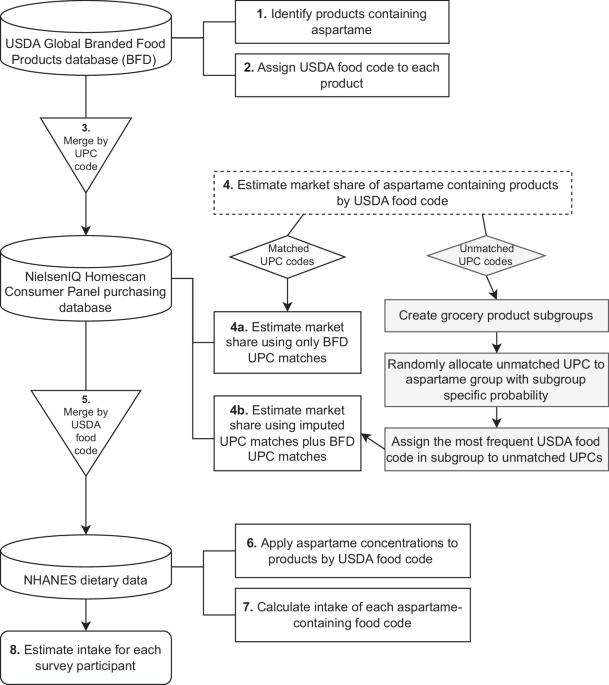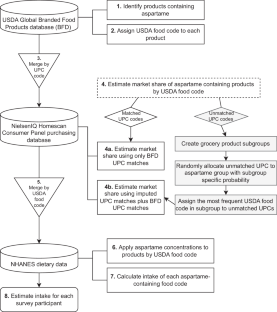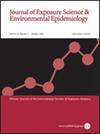Aspartame exposures in the US population: Demonstration of a novel approach for exposure estimates to food additives using NHANES data
IF 4.7
3区 医学
Q2 ENVIRONMENTAL SCIENCES
Journal of Exposure Science and Environmental Epidemiology
Pub Date : 2024-05-09
DOI:10.1038/s41370-024-00678-7
引用次数: 0
Abstract
Exposure to food additives is widespread but up-to-date and accurate intake estimates are rarely available. The safety of the food additive aspartame is the subject of recent controversy and intake estimates for this nonnutritive sweetener are typically derived from surrogates such as diet soda consumption. We describe an approach for developing nationally representative dietary exposure estimates for food additives that combines intake from dietary recalls and grocery purchasing information. We combined NielsenIQ Homescan Consumer Panel purchasing data with the USDA Global Branded Food Products database and the National Health and Nutrition Examination Survey to estimate aspartame intake and prevalence of consumption for the US population. We examined points of departure for aspartame from CompTox Chemicals Dashboard to provide context for exposures and potential effects. Mean, 90th percentile, and 95th percentile aspartame intake estimates are below the acceptable daily intake (50 mg/kg/day) and are lower than estimates from previous decades. Groups with the highest aspartame intakes are non-Hispanic whites, 60- to 69-year-olds, and individuals on diabetic diets. Aspartame exposure is highly prevalent (62.6%) in the US including sensitive populations such as pregnant women and children. Exposure to the widely consumed food additive aspartame is not well characterized, and concerns about potential health effects remain despite assurances of safety when consumed under conditions of intended use. This work provides current intake estimates for the US population with important comparisons across demographic groups and individuals on special diets. The approach includes ingredient statement and grocery purchasing data to capture all aspartame-containing products, beyond diet soda, in intake estimates. This framework also has the potential for application to other food ingredients.


美国人口的阿斯巴甜暴露量:利用 NHANES 数据对食品添加剂暴露估计的新方法演示。
背景:暴露于食品添加剂的情况很普遍,但很少有最新的准确摄入量估计值。食品添加剂阿斯巴甜的安全性最近备受争议,而这种非营养性甜味剂的摄入量估计值通常来自代用指标,如饮食苏打水的消费量:我们介绍了一种结合膳食回收和杂货店购买信息的摄入量来估算食品添加剂全国代表性膳食暴露量的方法:我们将 NielsenIQ Homescan 消费者小组的购买数据与美国农业部全球品牌食品数据库和全国健康与营养调查相结合,估算出美国人口的阿斯巴甜摄入量和消费流行率。我们从 CompTox Chemicals Dashboard 中研究了阿斯巴甜的出发点,为暴露和潜在影响提供了背景信息:结果:阿斯巴甜摄入量的平均值、第 90 百分位数和第 95 百分位数均低于可接受的日摄入量(50 毫克/千克/天),也低于前几十年的估计值。阿斯巴甜摄入量最高的人群是非西班牙裔白人、60 至 69 岁的老年人和糖尿病患者。在美国,包括孕妇和儿童等敏感人群在内,接触阿斯巴甜的比例很高(62.6%):人们对广泛食用的食品添加剂阿斯巴甜的暴露还没有很好的定性,尽管保证在预期使用条件下食用阿斯巴甜是安全的,但人们对其潜在健康影响的担忧依然存在。这项研究提供了美国人口目前的摄入量估计值,并对不同人口群体和特殊饮食人群进行了重要比较。该方法包括成分声明和杂货店购买数据,以便在摄入量估算中捕捉除减肥汽水以外的所有含阿斯巴甜的产品。该框架还可应用于其他食品配料。
本文章由计算机程序翻译,如有差异,请以英文原文为准。
求助全文
约1分钟内获得全文
求助全文
来源期刊
CiteScore
8.90
自引率
6.70%
发文量
93
审稿时长
3 months
期刊介绍:
Journal of Exposure Science and Environmental Epidemiology (JESEE) aims to be the premier and authoritative source of information on advances in exposure science for professionals in a wide range of environmental and public health disciplines.
JESEE publishes original peer-reviewed research presenting significant advances in exposure science and exposure analysis, including development and application of the latest technologies for measuring exposures, and innovative computational approaches for translating novel data streams to characterize and predict exposures. The types of papers published in the research section of JESEE are original research articles, translation studies, and correspondence. Reported results should further understanding of the relationship between environmental exposure and human health, describe evaluated novel exposure science tools, or demonstrate potential of exposure science to enable decisions and actions that promote and protect human health.

 求助内容:
求助内容: 应助结果提醒方式:
应助结果提醒方式:


